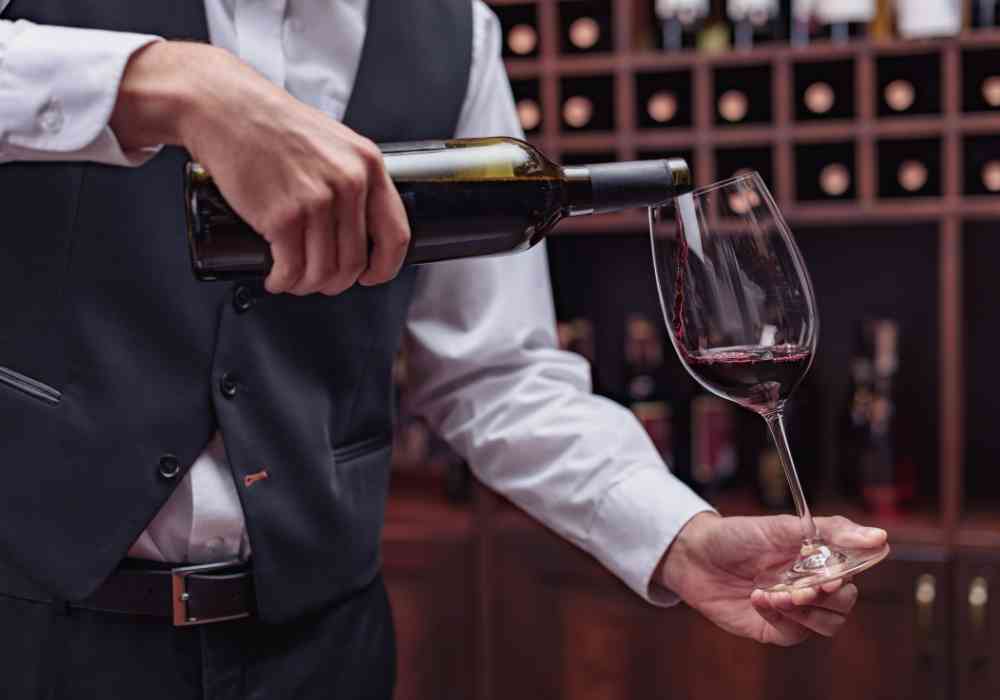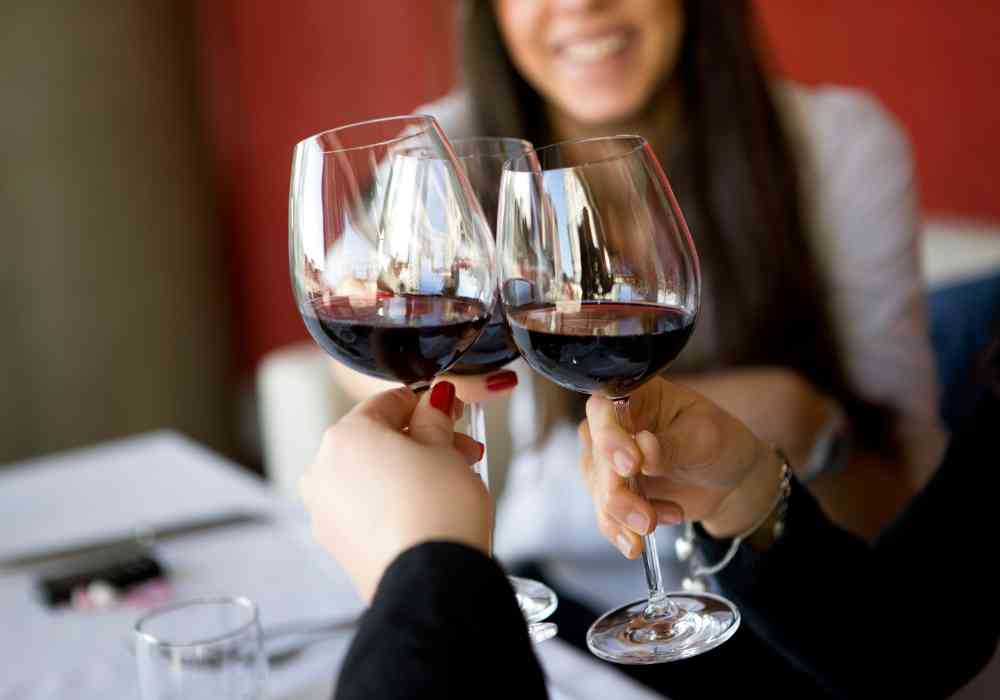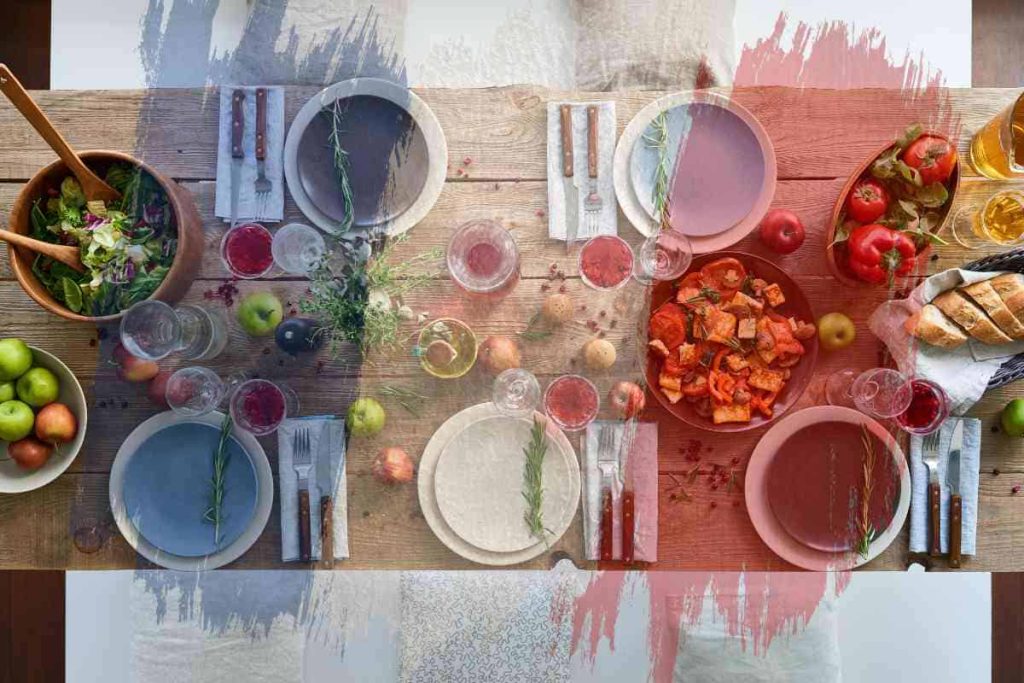Pairing food and wine matters in France: red wine with red meat and white wine with seafood. Say Sante (cheers) when toasting, hold your glass near the base, and make eye contact when clinking glasses.
Table of Contents
1. French Wine Culture
French wine culture is deeply ingrained in the country’s society and has been a staple in French cuisine for centuries. Wine is more than just a drink; it’s a way of life. French cuisine is renowned for its delicate and nuanced flavors; the same goes for its wine.
Wine pairings are determined by the type of food you’re having. Go for a light white wine if you’re having seafood. A robust red wine will be the perfect pairing for red meat. Wine culture is also influenced by the seasons. In the summer, people prefer white wines, while in the winter, they prefer red wines.
One of the most important aspects of wine culture is knowing when to stop drinking. In France, it’s impolite to continue drinking once everyone has finished eating. So, putting down your wine glass after the last bite is proper French etiquette.
2. Decoding French Wine Labels
One of the most important things to understand regarding wine labels is the Appellation d’Origine Contrôlée (AOC) system. The AOC system guarantees that a particular wine is authentic and has been produced in a specific region using traditional methods.
The AOC designation will be prominently displayed when looking at a wine label. This will tell you where the wine was produced and what type of wine it is.
For example, a bottle of Burgundy might have the AOC designation “Chablis,” which indicates that the wine was produced in the Chablis region using Chardonnay grapes.
Another important aspect of French wine production is the concept of terroir. Terroir is the unique combination of soil, climate, and other environmental factors that give a wine its distinct flavor and character.
3. Ordering Wine in French Restaurants
When selecting a bottle of wine, consider the occasion and the type of meal. If unsure of what to do, ask the sommelier for help. The sommelier is the wine expert and will help you select the perfect wine. Ask for recommendations, and don’t hesitate to let them know your budget.
Once you’ve selected your wine, the sommelier will pour a small amount of wine into your glass for tasting. Swirl it around to aerate it and release the aroma. Take a sniff and then take a sip, letting the wine sit on your tongue for a moment before swallowing.
If the wine is good, nod your head to approve it. If it’s not to your liking, politely decline and ask for another recommendation.
4. How To Serve Wine

Serving wine is not just about pouring it into a glass. The temperature, glassware, decanting, and aerating all play a role in enhancing the wine.
Serve wine at the correct temperature to bring out the best flavors and aromas. White wine should be served chilled between 44°F and 57°F, while red wine should be served at around 53°F to 69°F.
Use a smaller glass with a narrow opening for white to help concentrate the aromas. For red, use a larger glass with a wider opening to allow the wine to breathe and release its full potential.
Decanting is pouring wine into a decanter to separate sediment from the wine. It’s important for older reds, which can develop sediment over time. Decanting allows the wine to breathe, enhancing flavors and aromas. You can also use an aerator for faster aeration.
5. Hold Wine Glass By The Stem

Hold a wine glass by the stem, between your thumb and index finger. This helps to prevent the wine from getting warm from the heat of your hand, which can affect the flavor and aroma of the wine.
Pour the wine slowly, and ensure you don’t overfill the glass. A good wine etiquette is to fill the glass no more than halfway.
6. Toasting and Cheers-ing in France

If you’ve watched a movie set in Paris, you’ve likely seen people clinking glasses and saying “Santé” before sipping wine. Sante is the French equivalent of “Cheers” or “Good health” and is France’s most common way to toast.
But there are other common French toasting phrases. Here are a few:
- À votre santé means “to your health.”
- À la vôtre means “to yours” and is a reply to à votre Santé
- Tchin-tchin – This is a playful way to toast and comes from the sound of glasses clinking together.
Raise your glass and use any of the above phrases to say cheers. Make eye contact when clinking glasses. Wait for the clinking to end before taking a sip.
7. Pairing Wine With French Cuisine

Nothing beats a great bottle of wine paired with the perfect meal. French cuisine varies by region, with each area offering its own unique specialties. And with each region comes a different set of wines best suited to complement the local flavors.
One important factor to consider when pairing wine is the flavor and weight of the French food. Heavy, rich dishes like beef bourguignon call for a full-bodied wine, such as a Bordeaux or a Syrah. Lighter dishes, such as seafood or salads, pair best with a crisp white wine like a Sauvignon Blanc or a Chardonnay.
8. Drinking Wine in Public
Drinking wine in public places is legal in France. However, avoid being too loud or rowdy, especially in a business setting. Use a wine glass instead of drinking straight from the bottle.
Bring a corkscrew and wine glasses if you plan a picnic in France. When selecting wine for your picnic, consider purchasing a bottle from a local winery. In France, wine is often served with food. Pair your glass of wine with a French cheese or a baguette.
9. Wine Tasting
France is the home of some of the world’s most exquisite wines, from the Champagne region to the Bordeaux region and beyond. Each French wine region has its own specialties, and a wine enthusiast can spend a lifetime exploring each one.
When wine tasting in France, the first step is to visually inspect the wine’s color and clarity. Then, the aroma is evaluated by swirling the wine in the glass and sniffing deeply. Next, the wine is tasted, starting with a small sip to allow the taster to pick up on the wine’s flavors. Spitting the wine out after tasting is acceptable in France.
10. Gift Giving and Wine
In France, wine is more than just a beverage – it represents hospitality, friendship, and celebration. Giving the perfect bottle of wine can be thoughtful, but selecting the right one can be overwhelming.
Before you even begin to think about which wine to buy, you should consider your recipient’s preferences. What kind of wine do they prefer? Do they have any favorite wine regions or producers?
A high-quality bottle of wine will make a much better impression than a cheap one. Look for wines that are produced by reputable winemakers or from well-regarded regions.
Different occasions call for different types of wines. For example, a bottle of champagne or sparkling wine is appropriate for celebrations, while a bottle of red wine is suitable for a romantic dinner or a dinner party.
When giving wine as a gift, present it attractively and thoughtfully. Consider wrapping the bottle in elegant packaging, such as a decorative wine bag or a wooden box.
11. Dos and Don’ts of Wine Etiquette in France
| To Do ✅ | To Don’ts ❌ |
|---|---|
| Pair wine and food appropriately | Pour your wine too full |
| Hold the wine glass by the stem | Mix it with ice or water |
| Taste the wine before drinking | Use the wrong glassware |
| Make eye contact when toasting | Drink wine too quickly |

